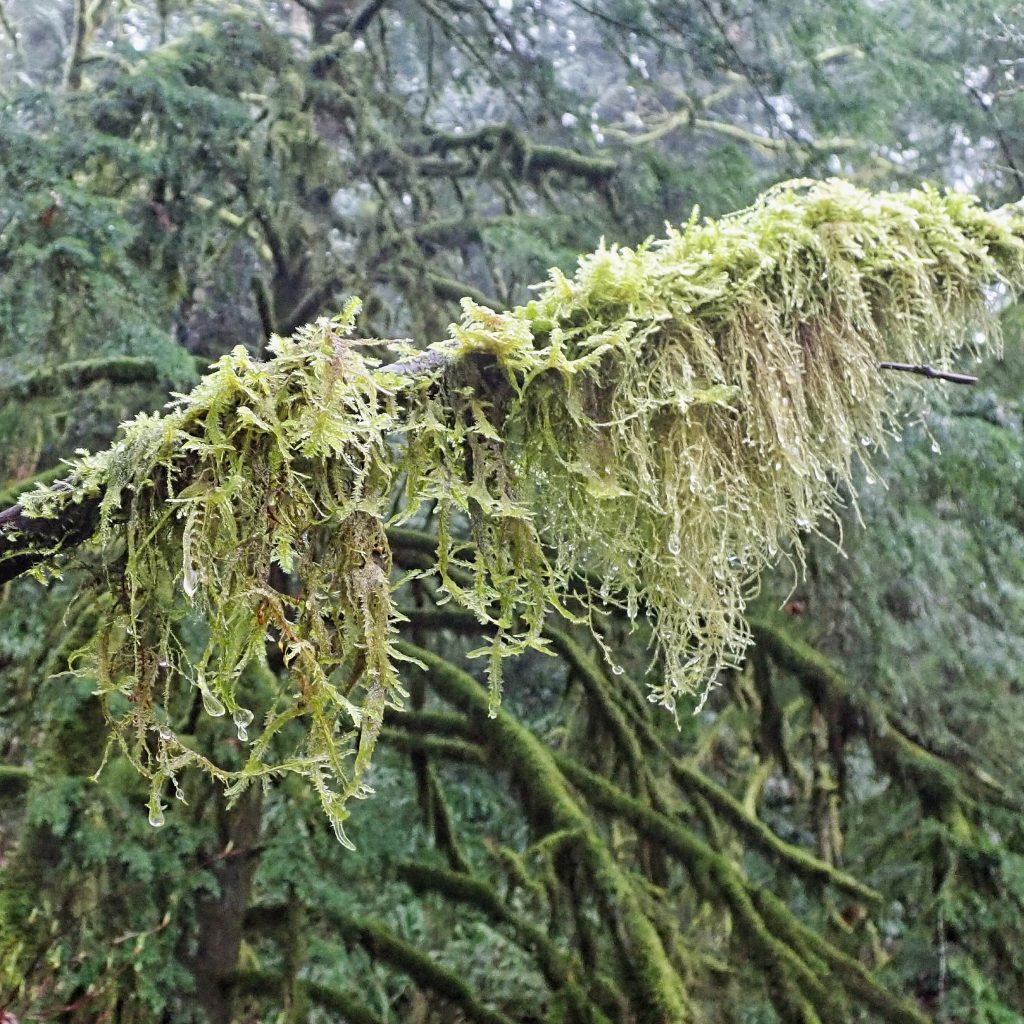
This is a very common moss in the forests of our region, and a fairly recognizable one, once you’ve identified it. But back when I started exploring mosses I always assumed there were two species here, and after I was introduced to Usnea lichens, I wasn’t positive that the pendant half wasn’t one of them, although a cursory examination with a hand lens quickly disabused me of that notion.
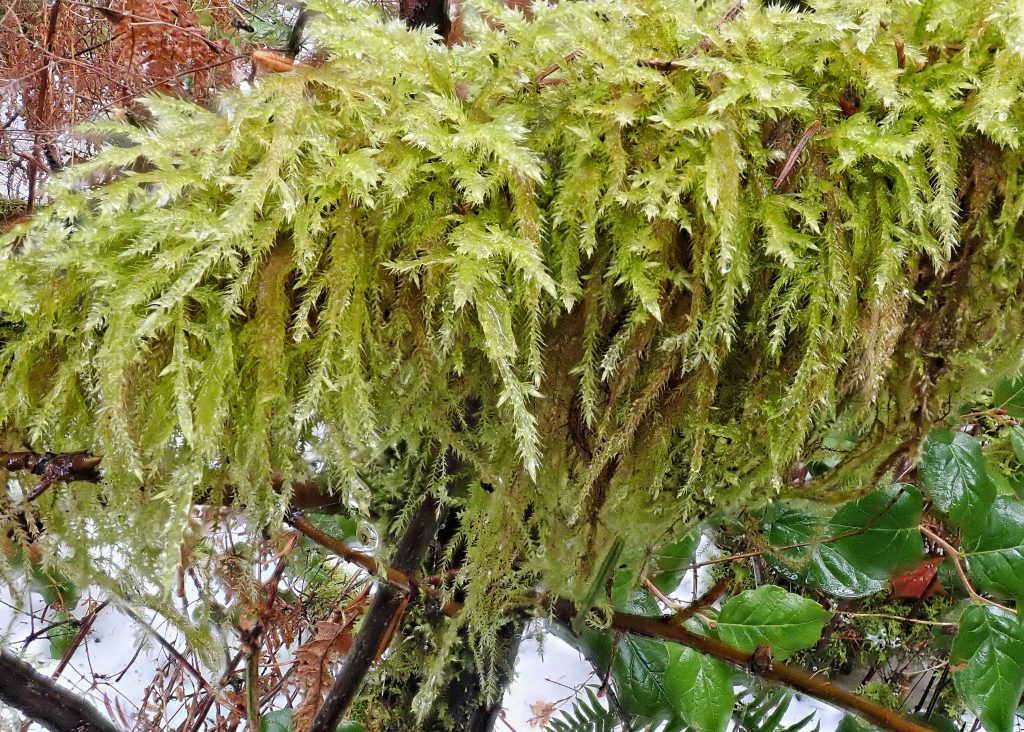
That’s because the mat part, composed of thickly leaved and regularly branched shoots, which often grows on horizontal branches, looks very different from the thin, sparsely leaved and unbranched part that hangs down. But, despite vast differences in size, and the pendant leaves being narrower, the leaves all have the same opaque alar cells, toothed margins, and sharply pointed apex.

There is much taxonomic controversy as regards this moss, since it is, within the usual variations of each species (and both have a large amount of variation), very similar to Isothecium myosuroides, a European and east coast of North America species. But molecular testing indicates that they are, indeed, different species, although the morphological similarities are so great that there is still resistance to this segregation.
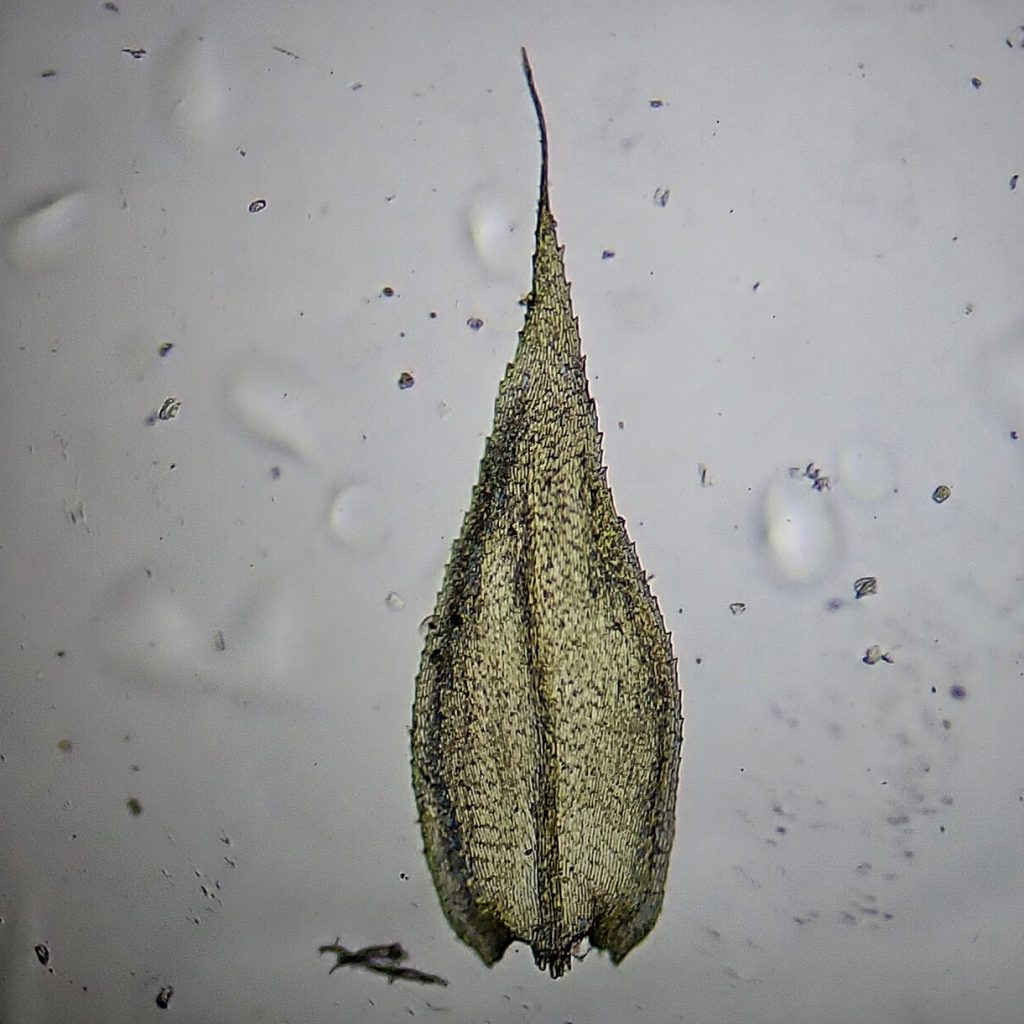
Description– Various shades of green, often glossy; forms large mats with secondary branches below, secondary branches usually very long, thin, unbranched shoots (flagelliform); stem leaves triangular, with toothed margins; alar cells opaque; costa single and fairly long; usually with many stolons from which other shoot clusters arise;
Similar species– I. cristata has branched secondary stems that are julaceous when dry, lacks flagelliform branches, and alar cells extend up to a third of the way along the leaf.
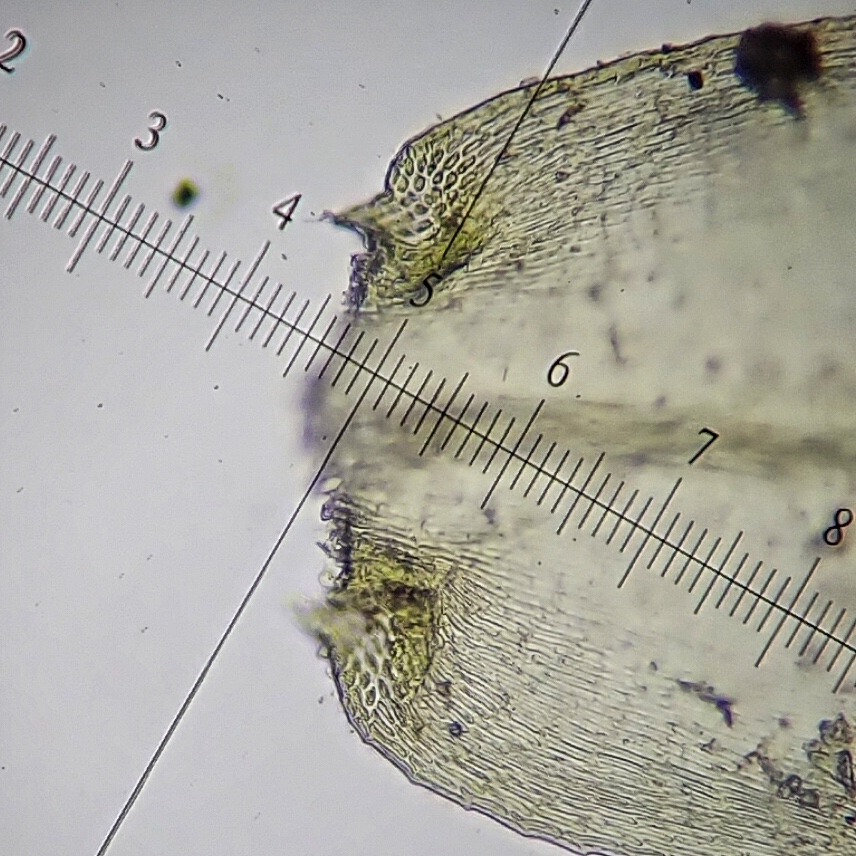
Habitat– Epiphytic on trees, limbs, shrubs, logs, and shaded rocks, in forests and forest edges, to middle elevations
Range-Northwestern North America; region wide in appropriate habitat, more common west of the Cascades.
Reproductive timing– spring/summer
Etymology of names–Isothecium is from the Greek isos, meaning equal, and theke, meaning case, and refers to the symmetrical capsules of this genus. The specific epithet stoloniferum is from the Latin for ‘having branches’. This refers to the, often abundant, presence of stolons in this species. Stolons are runners from the original plant which send up shoots remotely, and are, in general botanical terms, the above-substrate equivalent to below-substrate rhizomes, although mosses do not have roots and therefore lack rhizomes.
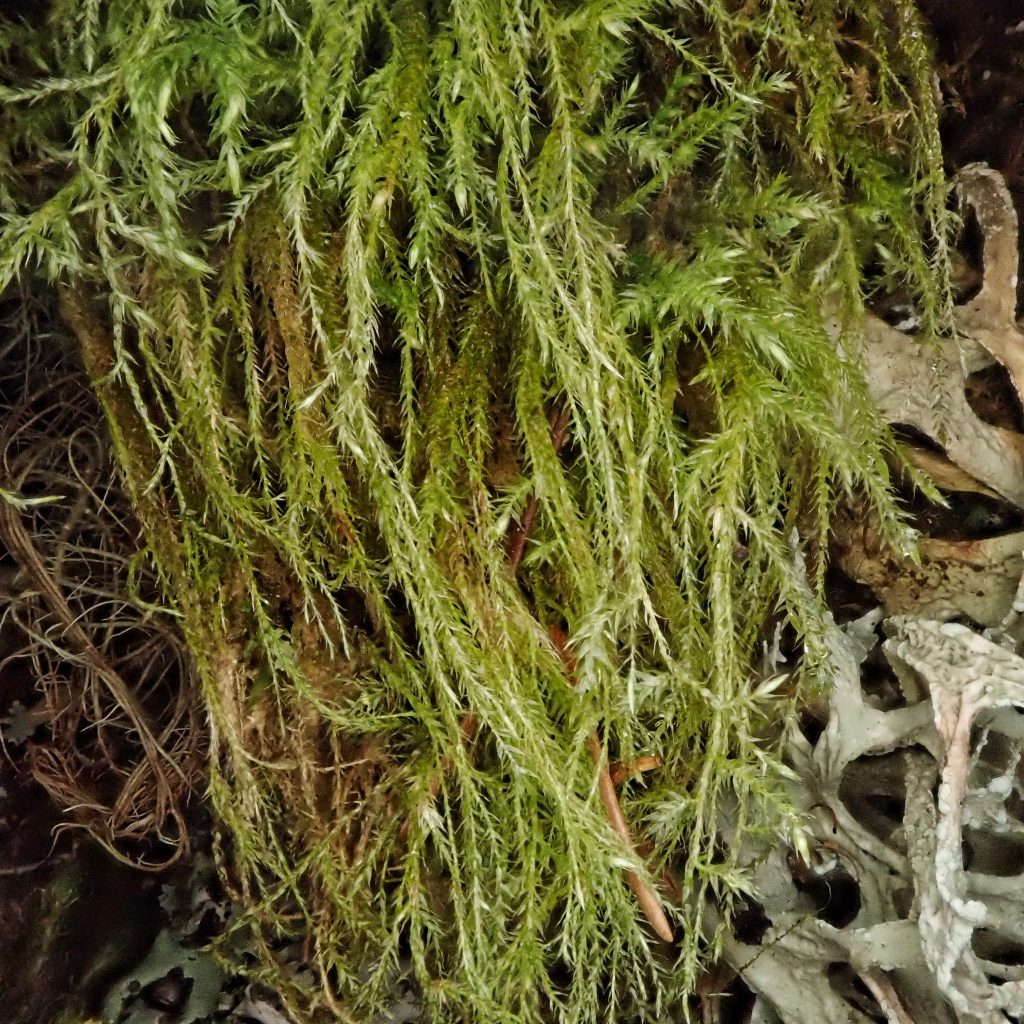
http://www.efloras.org/florataxon.aspx?flora_id=1&taxon_id=250099199
https://www.centralcoastbiodiversity.org/cat-tail-moss-bull-isothecium-myosuroides.html
https://www.jstor.org/stable/25064057?seq=5#metadata_info_tab_contents
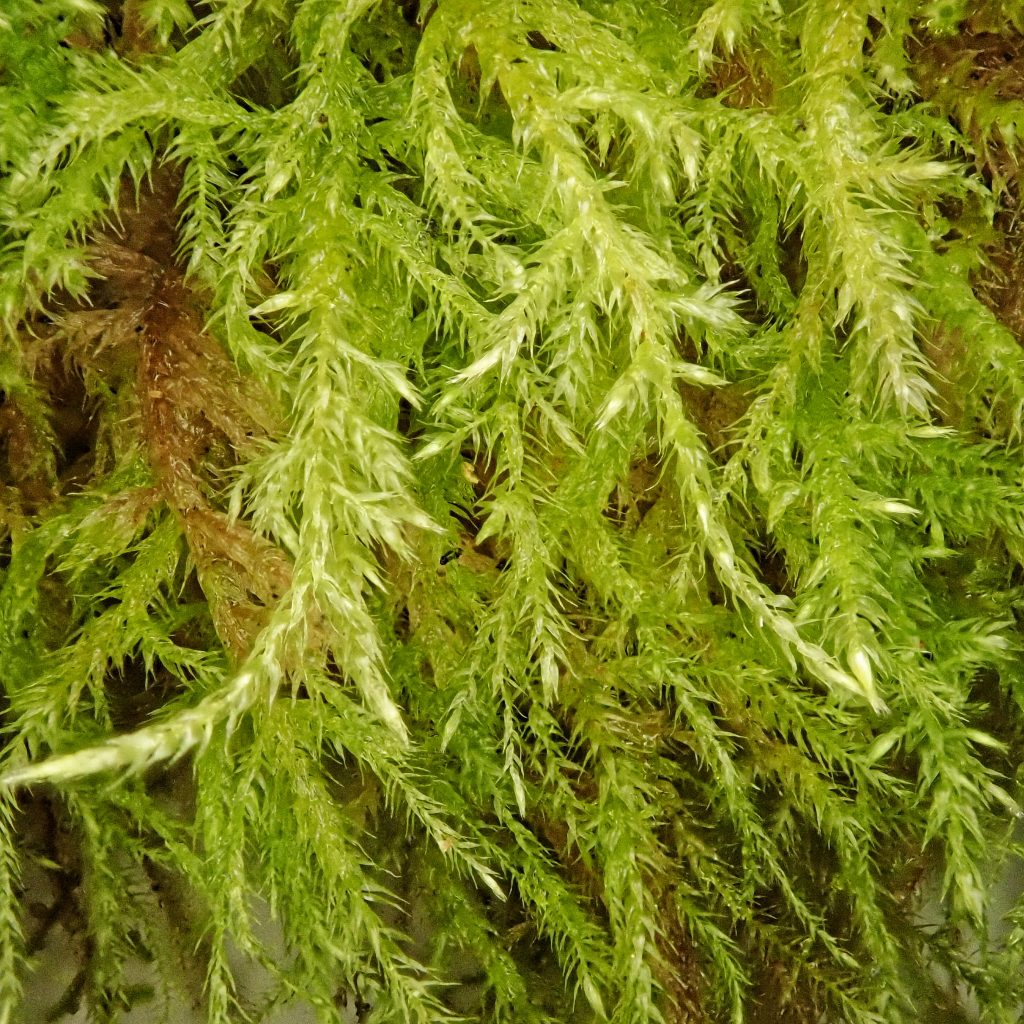

Lovely!
When I take people on moss walks, I call it the head-banger moss. Named for the number of times, when I was starting to study mosses, that I picked up a putatively unknown moss, put it under the microscope, hit my head, and said “Ah, it’s just Isothecium.”
I hear you!